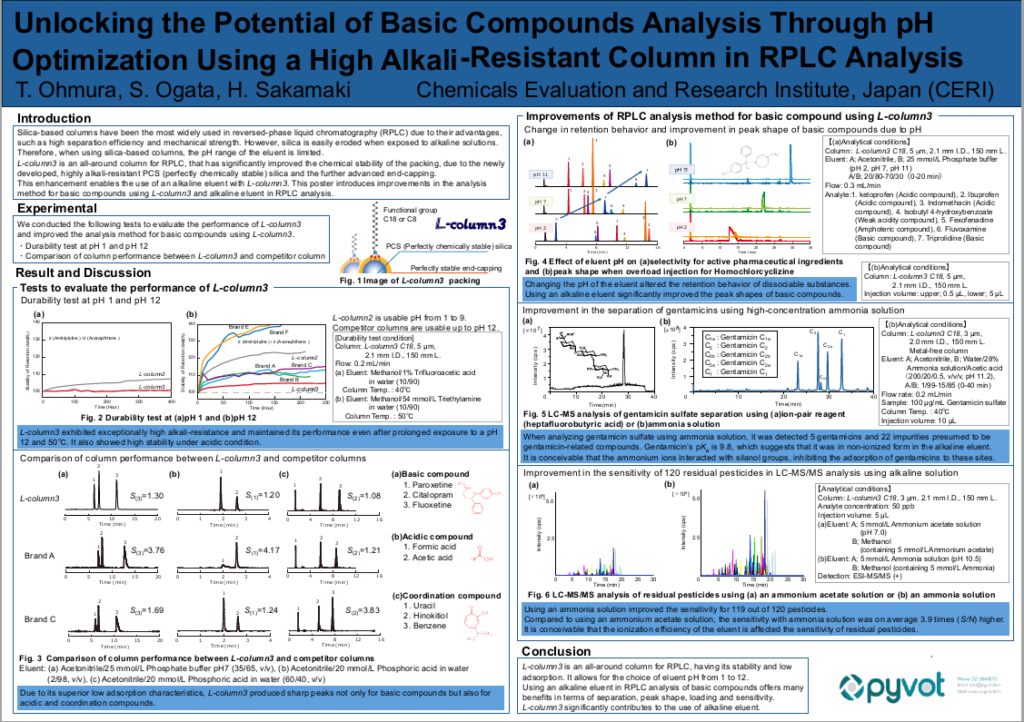23 Aug Unlocking the Potential of Basic Compounds Analysis Through pH
Optimization Using a High Alkali-Resistant Column in RPLC Analysis
The Chemical Evaluation Research Institute (CERI), manufacturer of the L-Column Series recently presented its poster at HPLC 2024 in Denver Colorado. The poster entitled “Unlocking the Potential of Basic Compounds Analysis Through pH Optimization Using a High Alkali-Resistant Column in RPLC Analysis” reveals the advantages of the L-Column3 series.
Silica-based columns are a staple in reversed-phase liquid chromatography (RPLC) due to their excellent separation efficiency and mechanical strength. However, their vulnerability to alkaline solutions limits their application.
The L-column 3 addresses this limitation with its enhanced chemical stability, featuring highly alkali-resistant PCS (Perfectly Chemically Stable) silica and advanced end-capping, enabling the effective use of alkaline eluents.
Experimental Highlights:
· Durability tests at pH 1 and pH 12 demonstrated L-column3’s exceptional stability in both acidic and alkaline environments, even at elevated temperatures (50°C).
· Performance comparisons revealed L-column3’s superior low adsorption while delivering sharp peaks for basic, acidic, and coordination compounds.
Advancements in Reversed-Phase Analysis with L-column3:
· Optimizing eluent pH significantly improved the retention behavior and peak shape of basic compounds.
· The use of alkaline eluents notably enhanced the detection of gentamicin sulfate, allowing the identification of five gentamicins and 22 related impurities.
· Employing ammonia solution as an eluent led to a remarkable 3.9x improvement in the signal-to-noise ratio for 119 out of 120 pesticides, compared to ammonium acetate.
Conclusion: L-column3 offers superior stability and low adsorption across a wide pH range (1-12). This flexibility in utilizing alkaline eluents brings substantial benefits in separation, peak shape, loading capacity, and sensitivity in the RPLC analysis of basic compounds.
The poster shows L-Column 3 being compared to two columns, please let us know if you are interested in learning which columns we used for this data.

